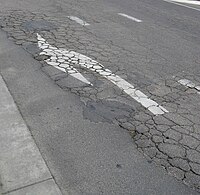
Photo from wikipedia
Maximising profit is an important target for industries in a competitive world and it is possible to achieve this by improving the system availability. Engineers have employed many techniques to… Click to show full abstract
Maximising profit is an important target for industries in a competitive world and it is possible to achieve this by improving the system availability. Engineers have employed many techniques to improve systems availability, such as adding redundant devices or scheduling maintenance strategies. However, the idea of using such techniques simultaneously has not received enough attention. The authors of the present paper recently studied the simultaneous optimisation of system design and maintenance strategy in order to achieve both maximum availability and minimum cost: the Non-dominated Sorting Genetic Algorithm II (NSGA-II) was coupled with Discrete Event Simulation in a real encoding environment in order to achieve a set of non-dominated solutions. In this work, that study is extended and a thorough exploration using the above-mentioned Multi-objective Evolutionary Algorithm is developed using an industrial case study, paying attention to the possible impact on solutions as a result of different encodings, parameter configurations and chromosome lengths, which affect the accuracy levels when scheduling preventive maintenance. Non-significant differences were observed in the experimental results, which raises interesting conclusions regarding flexibility in the preventive maintenance strategy.
Journal Title: Mathematics
Year Published: 2021
Link to full text (if available)
Share on Social Media: Sign Up to like & get
recommendations!